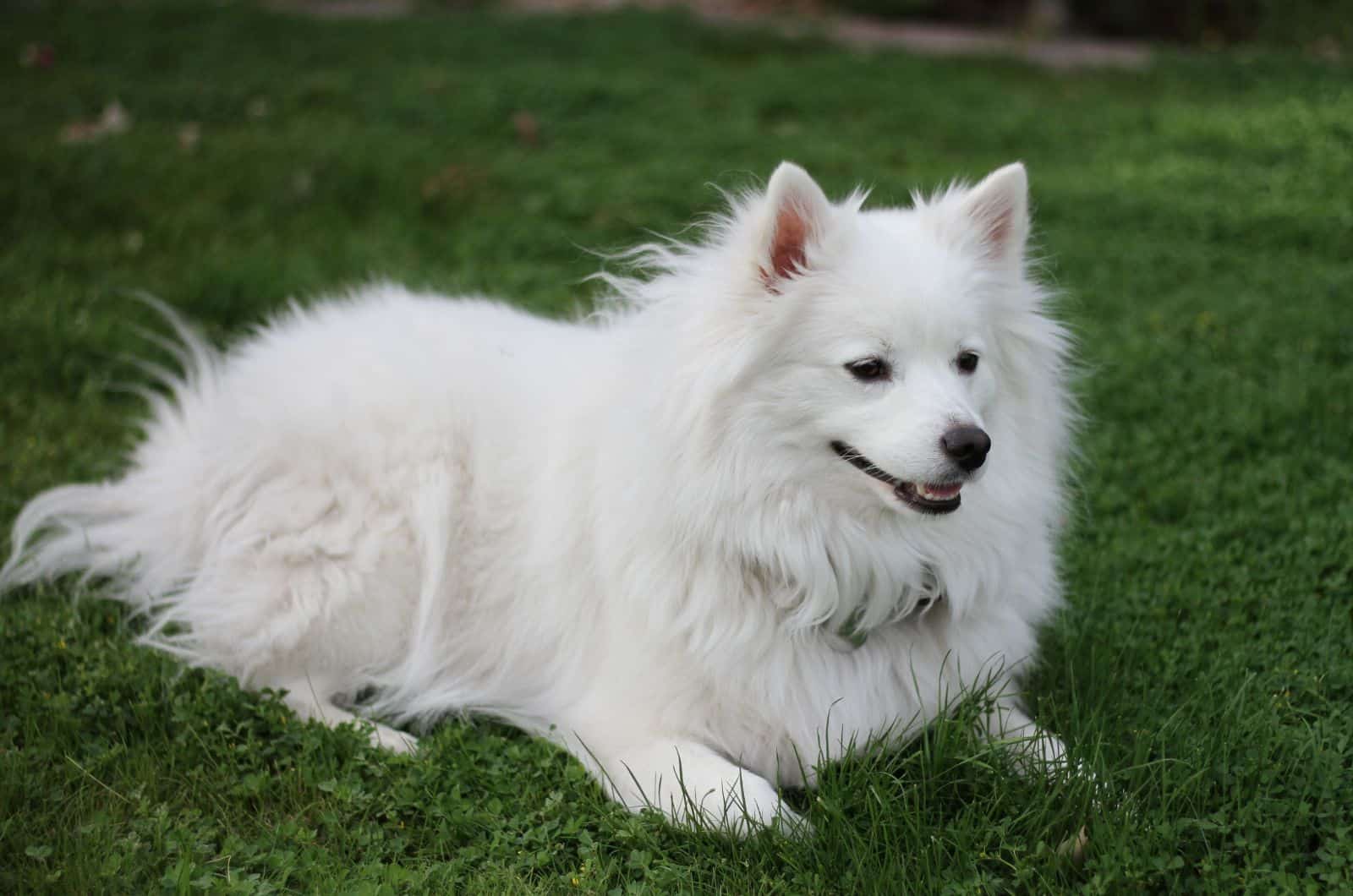This one is an appetite ruiner. If you like Fritos, you might have changed how you feel about it after you noticed your dog’s paws smelling odd. Unfortunately, corn chips or Fritos smell odd too, and the two, coincidentally, smell just like a dog’s foot.
If you have been scratching your head about how the stinky paw came to be, maybe it stepped into Fritos, or perhaps something fishy is going on. Join me while I go through all the possible answers to “Why does my dog smell like Fritos?”.
Why Do My Dog’s Feet Smell Like Fritos?

The answer is more of a list than a single thing. Dog paws walk over all sorts of things, including dirty soil and pavement. Picking up something from the germ pools that the outdoors provides is easier than you would think.
Moisture trapped between the paw pads and toes is usually the first thing that can make the dog’s paws smell like Fritos. If you mind your dog’s smelly feet, do not spray them with any scents or chemical solutions. Use an unscented wipe or warm water to wash the paw.
Perspiring through the sweat glands on the bottom of their paw pads creates moisture, and where there is moisture, there are yeast, fungi, and different types of bacteria.
Although your pooch might smell unappealing, it could just be a superficial thing that some dog shampoo and water can fix. In case of injury, the smell can mean an infection is active in your dog’s paw.
Because it is hard to notice an injury there, you might be unaware it exists. If your dog is anything like mine, he will just push through the pain because life is too short to pause for a small cut.
If the injury is too severe to shrug the pain off, you might notice your dog limping or skipping a step while running. That is a definitive sign that you should visit the DVM.
Keep in mind that Frito feet smells can also be present in other parts of the body, like the perianal and peri-vulvar area (poop hole and pee hole).
Now, I believe we should focus on how and why your dog got to the point of being a dispenser for corn chip smell. We will also see what symptoms point to vet intervention and how to help your dog recover.
Fritos fans should look away if they want to keep their affinity towards corn chips intact.
1. Summertime Is Magical, Dogs Turn Sweat Into Frito Smells

Unlike human skin, which acts as a body-wide transpirable membrane, dog skin is not able to expel moisture from their bodies. Body temperature regulation is done through panting and exchanging the hot dry air with humid air that is exhaled while panting.
Although the majority of thermoregulation occurs through this mechanism and vasodilation, some less-used systems include merocrine glands.
These are small glands located on the dog’s paw pads that produce sweat in situations that are stressful, similar to palms sweating when humans are nervy and for better grip. If your dog is often stressed, these glands will work overtime and create a moist environment between the toes.
Apocrine glands also produce moisture on the surface of the dog’s skin, but their role is not thermoregulation but scent production. The gland that produces pheromones is located on the tail in many dogs, which is why dog booties are the best place for dogs to get to know each other.
Yeast is present wherever there is a buildup of moisture, so it starts multiplying at rates that are not normal for that part of the body. The bigger the yeast overgrowth, the more pungent the Frito smell. This does not mean your dog is sick, but it is simply a matter of being a dog.
Alternatively, in the fall, dogs will walk and run through mud, puddles, and piles of wet leaves, so drying off your dog’s paws once home will help prevent the yeasty odor. A wet dog can accumulate all kinds of smells and dirt in the hair, so hygiene is a primary concern.
2. Injury Or Grooming Mistake

Running without a worry on their mind is classic dog behavior. In full swing of spriting in the park or yard, your dog might catch its toenail onto some solid object. Pulling the toenail out and breaking it is nasty business, and you should notice it right away because it is painful.
There can often be severe damage to the root of the toenail in the paw, so immediate veterinary attention is advisable. Any tear in the skin or the nail can pave the way for microbes to enter the wound.
Pet grooming salons can often cut too much of the toenail, exposing the nailbed to infection. Adjacent to the bone at the root, the nail can transfer germs into the bony tissue, which can increase the chances of bone infection.
Bandaging the affected spot with antibiotic ointment is the easiest way to prevent or cure infections due to nailbed injury.
Trimming the nails, on the other hand, is useful for preventing injury while your fido is doing high-intensity physical activity. Shorter nails will have a lower likelihood of injury.
3. Natural Flora Overgrowth On The Skin

An open wound is not necessary for your dog to have an infection. Human skin has bacteria and fungi that live on the skin. Their role is to maintain a normal balance of phyla.
Dog skin is the same, except the fact that the most dominant bacteria on their epithelium is Proteobacteria. While its numbers on the skin are big, it is much more present in dog feces.
Different dog breeds have different ratios of bacteria found on the skin, and a study has found that dogs that suffer from allergies have a lower variety of phyla present. This means that bacterial or fungal overgrowth is more likely to severely impact a dog with allergies.
Any excessive number of bacteria is dangerous for dogs, so a balanced diet, good hygiene, and regular vet checkups can help diagnose imbalanced flora on the skin.
It is important to note that bathing your dog too often, especially with shampoos, can be detrimental to general dog health. Removing natural oils and microbes that live on the surface of the skin can be the cause of what you are trying to prevent.
4. Proteus Infection

Proteobacteria is an enterobacterium that is most present in the feces and urine of dogs. However, its increased presence on the skin can cause infection.
Dogs that have urinary tract infections or digestive system infections will lick the perianal and peri-vulvar and transmit the higher concentration of Proteus bacteria onto their skin. This will create a big overgrowth of the normal bacterial colonies and can cause pyoderma.
While these transient bacteria cannot successfully live on the skin, the smallest crack in the epidermis can create an opening for infection. For bacteria like Proteus, common meds do not work because it is resistant to wide-spectrum antibiotics.
It is rare that an otherwise healthy dog has a resistant pyoderma infection, but Proteus infections have been associated with a small number of otitis externa.
Otitis externa is an outer ear infection that can impair your dog’s hearing if left untreated, and pseudomonas bacteria are a far more frequent cause of the condition.
Because treating a Proteus infection is hard due to its resistance to common antibiotics, lowering the chances of UTIs and gastrointestinal infections is key. Nutrition and hygiene are of paramount importance in lowering the chances of infection.
Proteus Infections Cause Bacterial Cystitis
Bacterial cystitis is the most common progression of an untreated proteus infection. The inflammation of the bladder can be present without clinical symptoms, so the infection might be in its more advanced stage when the diagnosis is established.
In rarer cases, bacterial cystitis can be caused by a tumor, bladder stones, or polyps. However, aberrant anatomy in female dogs is a possible trigger for BC.
The most frequent symptoms of bacterial cystitis due to Proteus are hematuria (blood in the urine) or dysuria (low amounts of urine). Urinating more than usual is perhaps the most obvious sign of cystitis.
With the abnormal number of bacteria in the urine and feces, the smell might become similar to corn chips or tortillas. Dog booties can smell too, and licking themselves to clean the area can spread the odor to other parts of the body.
Resistant Pyoderma
Pyoderma is a bacterial skin infection that is very common in dogs. The structure of the dog’s skin and its pH value is different from that of the human skin, and bacteria find it easier to survive and multiply on the exterior of it.
A thinner protective layer of the epidermis allows for entry into the bloodstream via the smallest rupture in the tissue, leading to systemic infection. With pyoderma caused by Proteus, the treatment can be long and hard because it is multi-drug-resistant (MDR).
Dogs with resistant pyoderma can present with symptoms that include pustules, hives, hair loss, blisters, or patches of dry skin. A yeasty odor is not uncommon, especially around the anus and the groin.
The use of a special therapy to treat such infections includes excellent secondary care and precisely tailored med therapy. If the infection fails to react to treatment, then you can discuss riskier antibiotic therapy approaches with your vet.
In many cases, probiotics were used as a supplement that helped avoid the use of antibiotics (that further weaken the immune system in MDR infections). Still, there is no definitive answer on whether it actually works.
5. Pseudomonas Aeruginosa Infections

Mostly associated with ear infections, Pseudomonas Aeruginosa is much more common than Proteus in terms of superficial skin infections. Similar to the Proteus infection, Pseudomonas is more likely to infect dogs with allergies and pre-existing conditions.
Skin injuries or trauma also facilitate easier entry of bacteria into the body and can spread very rapidly. Its survivability on the skin mainly depends on the natural phyla balance, but in places where it is not common, it displays moderate to high resistance to usual treatment.
Otitis Externa
Ear infections affect a large percentage of dogs around the world. Though not that common, some cases of otitis externa can be caused by the Pseudomonas bacteria. This enterobacterium is present in the dog’s body, but it can be found in soil too.
Digging, squeezing through holes, and scratching the ear after a walk in the woods can be an easy way of increasing bacteria colonies on the thin skin of the outer ear.
Since these MDR infections are mainly secondary infections, some injuries or immune system deficiencies make it easier to enter the surrounding tissues and bloodstream. Dogs that are immunocompromised or have allergies are at greater risk.
An inflamed ear canal can make your dog scratch the ear incessantly and shake or tilt its head, accompanied by swelling, redness, tenderness around the ear, and discharge.
Loss of hearing is possible, but only if the other symptoms are not noticed in time, and the infection spreads to the middle ear.
Post-Grooming Furunculosis
Whether you take your dog to the groomer or do it yourself at home, products with chemicals, such as shampoos or conditioners can cause damage to skin. This condition usually triggers the display of symptoms a day or two after grooming.
Brushing the dog’s coat can cause microscopic tears in the skin surface, and the chemicals might upset the natural phyla balance by killing of commonly found bacteria such as staphylococcus, causing Pseudomonas to bloom.
The biggest danger to your dog is the bacteria invading the blood and infecting bone tissue. Bone infection is extremely painful and can be debilitating for many dogs. The condition is known as osteomyelitis and is defined as a bacterial or fungal inflammation of the bone marrow.
Unfortunately, if the bacteria enter the bloodstream, they can infect any organ system. Liver, heart, brain, or lungs, the outcome of an untreated Pseudomonas infection can be fatal.
Managing MDR bacterial infections is hard because overuse of antibiotics is one of the reasons for the resistance to their effects, so prevention is the best action. Research points to the fact that water presence in diluted grooming products increases the infection probability.
As most bacterias prefer humidity, Pseudomonas is more likely to affect dogs that have their coat soaked. Similarly, the paw pads can become infected by this bacteria, especially since they are environmental pathogens (can be found in water, soil, etc.).
Wet hair and skin will speed up the process of bacterial and yeast multiplication, so that would be a direct answer to “Why does my dog smell like Fritos”. If you do bathe your dog, do not do it too often. Three to four times a year is plenty unless your dog enjoys muddy endeavors.
Dry your dog’s coat well to avoid trapped moisture, and use a soft brush to reduce the chance of skin lesions. A hairdryer can be useful for removing excess moisture, but keep the heat on the low setting.
When Is Your Dog’s Wellness In Danger After Smelling Like Fritos?

Yes, Fritos smells are not normal for dogs, but in many cases, it is a temporary occurrence. If the scent intensifies or becomes more similar to rotting cheese, then it is definitely time for a vet visit.
If the smell is not enough to go on, you can always check for swelling, redness, or discharge from the affected area. Your pet’s feet will often have a crusty look with discoloration, while the skin on other parts of the body can have several symptoms.
Most commonly, there will be pustules, dry patches of skin, hairless spots, discharge from recurring wounds, etc. If the wound is not closing, that can also be a sign that an infection is overloading the dog’s immune system, so coagulation is slowed down dramatically.
Recovering your pet’s health after serious infection and intense therapy can be daunting, but dog owners should understand that with Proteus and Pseudomonas infections, secondary care will require a lot of time to get your dog’s life back to normal.
Most dogs are more susceptible to recurring infections after such conditions, which means you will have to pay even more attention to prevention. Hygiene will have to be planned out, and certain activities that involve the outdoors more meticulous planning.
Summary

Noticing this very pungent smell on your dog might turn your red alert on. Most times, your dog will be fine, but if the smell becomes worse or does not perish in a few weeks, that might warrant a call to the vet.
If your dog likes sitting in your lap or very close to you, and you notice a strange odor during a cuddle session, look for visual signs of infection. Redness, swelling, discharge, pus, and similar clinical signs can help you know the urgency of a vet visit.
Why does my dog smell like Fritos? I hope it simply ate your corn chips while you were not looking, or it stepped into some old cheese, and nothing serious is at hand. Regardless, keep those paws and coat clean, and provide a balanced nutrition and you will both be fine.













